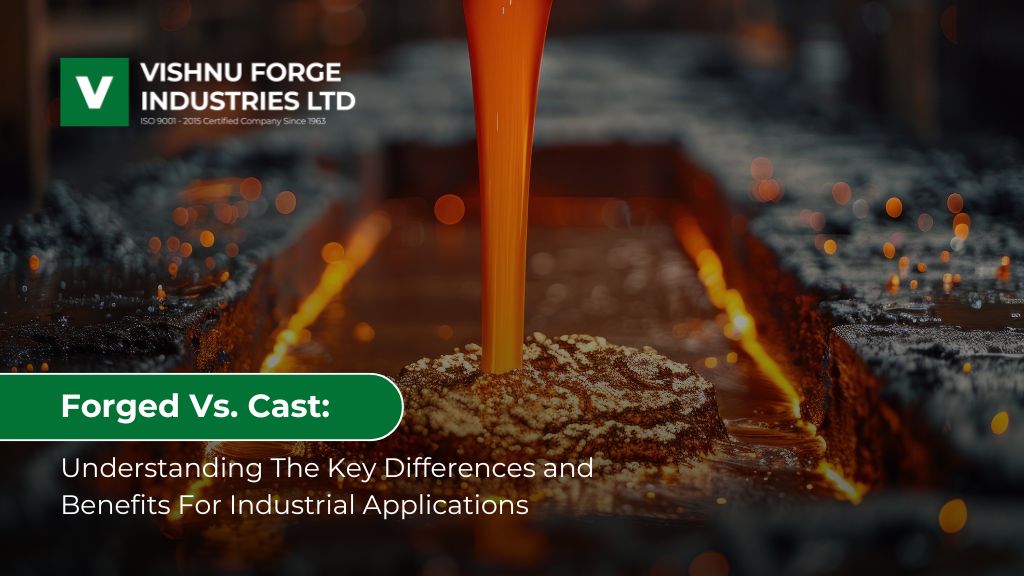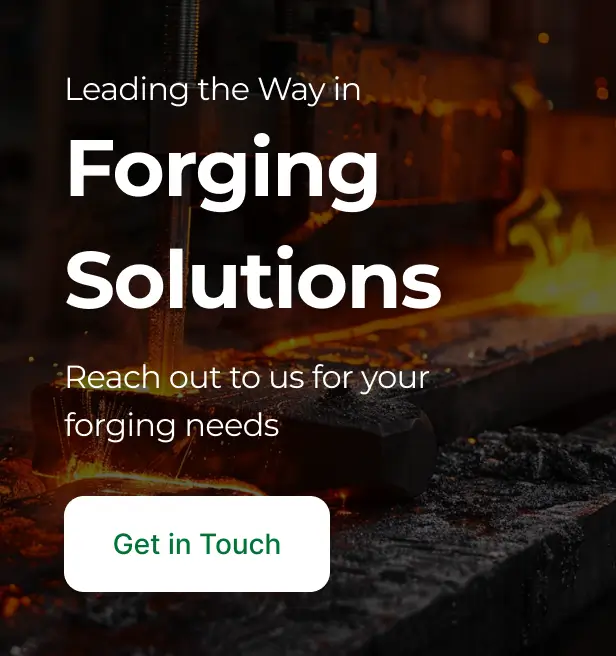In industrial applications, the choice between forging and casting processes can have a significant impact on the quality, durability, and efficiency of the final product. Both methods involve the shaping of metals, but they differ in terms of their processes and resulting properties. Understanding the key differences and benefits of forging and casting is crucial for making informed decisions in industrial settings.
Defining Forging and Casting Processes
Before delving into the differences, let’s first establish what forging and casting entail.
Forging, a process that dates back thousands of years, involves the manipulation of metals through the application of compressive forces. This process typically uses hammers, presses, or other similar machinery to shape the metal while it is in a solid state. As a result of these compressive forces, the metal’s grain structure is altered, enhancing its strength and directional properties.
Forging can be further categorized into hot forging and cold forging. Hot forging is carried out at temperatures above the recrystallization point of the metal, making it easier to deform and shape. Cold forging, on the other hand, is done at or near room temperature, resulting in increased strength and improved surface finish. Both methods have their own advantages and are chosen based on the specific requirements of the final product.
The Basics of Casting
On the other hand, casting involves the melting of metals to transform them into a molten state before pouring them into a mold to solidify. This process allows for the creation of complex shapes and intricate details. Once the metal cools and solidifies, it is removed from the mold to derive the final product.
There are several casting methods used in industrial applications, including sand casting, investment casting, and die casting. Sand casting is one of the oldest and most versatile methods, where a pattern is pressed into sand to create a mold cavity for pouring the molten metal. Investment casting, also known as lost-wax casting, is a precision casting process that can produce intricate parts with excellent surface finish. Die casting, on the other hand, utilizes metal molds to produce high volumes of parts with consistent quality and dimensional accuracy.
The Key Differences Between Forging and Casting
Now that we have established a foundation, let’s explore the key differences between forging and casting.
Material Properties and Strength
In terms of material properties, forged parts generally exhibit superior mechanical characteristics compared to cast parts. The directional flow of the metal’s grain structure during forging ensures high strength and resistance to fatigue and impact. Cast parts, while still strong, are more susceptible to internal defects, such as porosity and inclusions, which can affect their overall strength.
Furthermore, the process of forging allows for the refinement of the metal’s microstructure, resulting in enhanced properties such as improved grain size and increased toughness. This makes forged parts highly reliable and suitable for applications that require exceptional strength and durability.
Production Cost and Time
When it comes to cost and time considerations, forging is often more expensive and time-consuming than casting due to the high temperatures and specialized machinery required. Forging also demands skilled labor and meticulous attention to detail.
On the other hand, casting can be more cost-effective and faster due to its ability to produce intricate shapes in a single step, reducing the need for additional post-processing. This efficiency in production makes casting a preferred choice for industries that require large quantities of parts with complex geometries, such as the automotive industry.
Design Flexibility and Complexity
Forging offers limited design flexibility compared to casting since it relies on shaping the metal in its solid state. However, it excels in producing parts with superior dimensional accuracy, close tolerances, and better surface finishes.
Moreover, the process of forging allows for the creation of parts with excellent structural integrity, making them suitable for critical applications where reliability is paramount. This is particularly important in industries such as aerospace and defense, where the performance and safety of components are of utmost importance.
On the other hand, casting, with its ability to create complex and intricate shapes, provides greater design flexibility, making it ideal for industries that require intricate and customized products. This versatility in design allows for the production of artistic and decorative elements, as well as components with unique geometries that cannot be achieved through forging.
Benefits of Forging in Industrial Applications
Now that we have explored the differences, let’s dive into the benefits of forging in industrial applications.
Forging has been a cornerstone of industrial manufacturing for centuries, offering a myriad of advantages that cater to the demanding requirements of various sectors. One key benefit of forging lies in the unparalleled durability and longevity it imparts to components. Whether it’s heavy machinery, aerospace structures, or automotive parts, forged components are known for their ability to withstand extreme conditions and prolonged usage without succumbing to wear and tear.
Durability and Longevity
Forged parts are renowned for their exceptional durability and longevity, making them ideal for applications subjected to high stress, heavy loads, and extreme temperatures. The improved grain structure resulting from the forging process enhances the part’s resistance to wear, corrosion, and deformation, ensuring consistent performance over time.
Moreover, the process of forging enhances the material’s internal structure, aligning the grain flow to follow the shape of the part. This alignment not only boosts the component’s strength but also contributes to its fatigue resistance, crucial for components operating in cyclic loading conditions.
Structural Integrity and Strength
Due to the refined grain structure achieved through forging, forged parts possess outstanding structural integrity and strength. Their exceptional mechanical properties translate into reduced instances of failure, providing a higher level of confidence in critical applications where safety and reliability are paramount.
Efficiency in Production
While the production time for forging may be longer, it compensates for this with greater efficiency. With fewer internal defects and a higher level of dimensional accuracy, forged parts often require minimal to no further machining, reducing the need for additional processing and enhancing overall production efficiency.
Furthermore, the efficiency of forging extends beyond the manufacturing process. The longevity and reliability of forged components lead to decreased maintenance requirements and downtime, ultimately resulting in cost savings for industries relying on continuous operation and minimal disruptions.
Benefits of Casting in Industrial Applications
Now, let’s turn our attention to the benefits of casting in industrial applications.
One of the key advantages of casting is its versatility in design. The process of casting allows for the creation of intricate and complex shapes, making it highly adaptable to meet various design requirements. Whether it’s decorative components or large industrial parts, casting provides the flexibility to achieve non-uniform thicknesses, hollow interiors, and intricate geometries. This opens up a world of possibilities for designers and engineers, enabling them to push the boundaries of what is possible in terms of form and function.
But it’s not just about design possibilities; casting also offers cost-effectiveness for large-scale production. When it comes to producing a high volume of parts, casting often proves to be more economical compared to other manufacturing processes like forging. The ability to reproduce complex shapes with ease, coupled with the utilization of reusable molds, helps reduce production costs and enable efficient mass production. This makes casting an attractive option for industries that require large quantities of parts without breaking the bank.
Another advantage of casting is the wide range of materials that can be utilized. Casting allows for the use of various metals, alloys, and even non-metallic substances such as polymers or ceramics. This versatility in material selection provides the flexibility to meet the specific requirements of diverse industrial applications. Whether it’s the need for superior strength and durability or the desire for specific aesthetic qualities, casting can deliver. This opens up a world of possibilities for industries ranging from automotive and aerospace to architecture and art.
Understanding the differences and benefits of forging and casting allows industrial manufacturers to make informed decisions based on their specific needs and priorities. Whether prioritizing superior mechanical properties and strength, intricate design capabilities, or cost-effectiveness, both forging and casting have their place in the industrial landscape, offering distinct advantages for various applications.
So, the next time you come across a beautifully designed metal component or a large-scale production line, remember the benefits of casting. It’s not just about the shape or the cost, but also the endless possibilities and flexibility that casting brings to the table.



